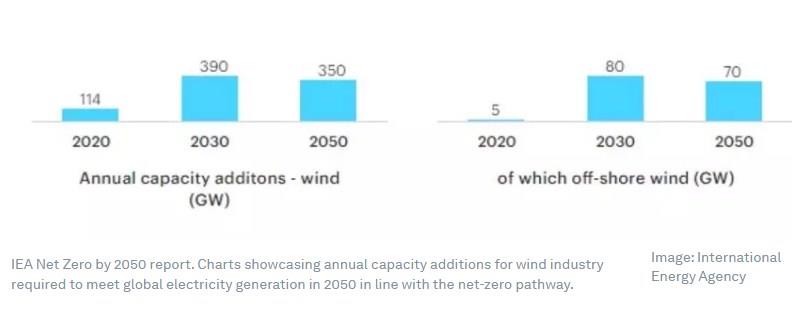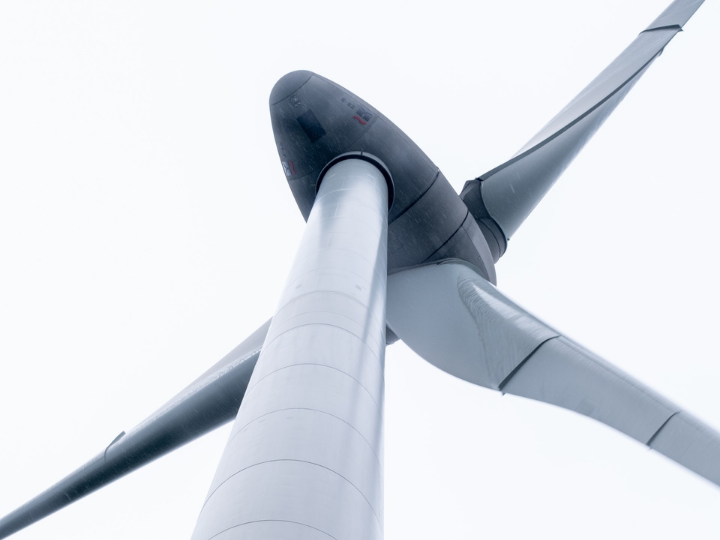by Thomas Leurent*
Since the International Energy Agency (IEA) announced the Net Zero by 2050 target in May 2021, many governments and organizations have pledged to achieve zero emissions in the coming decades. But a recent move by leading wind manufacturers, which have chosen to retreat from hyper-growth due to rising production costs, questions the industry’s ability to achieve the ambitious target.

The wind industry is being buffeted on all sides by shrinking subsidies, surging supply chain costs, and cumbersome approvals processes, compounded by what is often a lack of synchronized and optimized project design. Wind turbines’ ballooning size, bulky weight, and inefficient designs create an unsustainable demand for raw materials and increase costs.
A matter of weight for the wind industry
Going back to the old chestnut of U.S. politics that preached that an election was all about “the economy,” then the wind industry should observe that, to decrease costs, it might be about “the weight.” A new, efficient design strategy with a considerable reduction in weight will enable the offshore wind industry to sustain exponential growth profitably.
Three-quarters of the cost of offshore wind is mechanical. Three complementary approaches can tackle this problem. The first one is to cost out materials through mass design customization. Since every offshore wind site offers different conditions, an appropriate, custom design can lead to a 30% reduction in weight. The second strategy is to focus on the ability of local supply chains to mass manufacture and execute modular designs. Modular design manufacturing is essential to achieve mass design customization, leading to a weight reduction. In the third place, the market can weather the unmanageable costs by ramping up quickly to deliver volume and price.
Retreating from markets is not the solution
Leading wind industry manufacturers have their accounts in the red despite surging demand for booming wind power and increasing fossil fuels and electricity prices. Many manufacturers respond to rising production costs by retreating from markets, delaying deliveries, raising prices, and setting barriers to their service business. The resulting slowdown in wind development will seriously hinder the global fight against climate change.
Volume and margins in a tornado market
The offshore wind market has entered a “tornado market,” a term coined by American consultant Geoffrey Moore to describe a period of hypergrowth in which new product categories grow profusely. Mr. Moore, author of Inside the Tornado: Strategies for Developing, Leveraging, and Surviving Hypergrowth Markets (2004), states that, during a tornado, the market “will be served, at the price point and the volume it demands,” whether by current leading manufacturers or by more innovative newcomers. The dominant provider will preserve its margins while serving the market at the price and volume demanded with robust and sustained innovation.
The wind industry needs to innovate and collaborate at scale and pace
The wind market needs to match the cross-sector collaboration and innovation that helped the solar industry deliver an 89% reduction in costs over a decade.
The lack of cross-sector design synchronization increases manufacturing costs and worsens lengthy approval processes to bring each new turbine to market. The price of conception and validation for each new generation of a wind turbine is as high as $500 million.
In the current loss-making environment, there might be an opportunity: to make research and development more efficient and more disruptive, two factors often regarded as different sides of the same coin.
Data sharing among suppliers and developers and collaborative engineering will be crucial to unlocking the creation of optimized technologies designed for cumulative cost-efficiency between two parties. For example, turbine blades, which nowadays can weigh more than a humpback whale, could benefit from new materials and design tools to make them lighter. In 2018, during an interview, Jim Snabe, Chairman at Siemens AG, developed his ideas on this next step: “If we combined the two — the great ideas that startups have, and access to scale through the large companies — we would create what I call innovation networks.” The innovation networks Snabe refers to allow for simultaneous “unlimited creativity and unlimited scale.”
Streamlined system design with continuous innovation will enable the wind industry to scale up efficiently and meet soaring demand. Such a strategy will break through the ceiling on growth for all industry players. With sustainable use of manufacturing, materials, transportation and installation resources, the industry will be able to deliver an additional 80 gigawatts (GW) a year by 2030.
If OEMs and operators create a best-of-breed ecosystem and adopt an interoperable approach, the new infrastructure could be more scalable, durable and efficient. Extending this model to drive cross-industry system design could propel sector-wide improvements in costs, profit, and performance and deliver value for all stakeholders.
*Chief Executive Officer, Akselos
**first published in: www.weforum.org




 By: N. Peter Kramer
By: N. Peter Kramer

